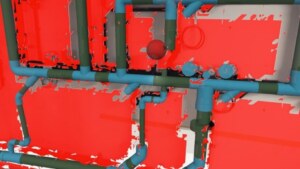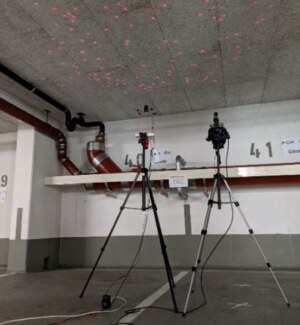Abstract
The aim of this research project is the development of a construction site-suitable augmented reality (AR) system for improving the quality of construction, building security and energy effi-ciency as well as increasing the efficiency of construction investigation. The potential and the requirements of AR in the phases of construction and operation should be determined. This is relevant for everyone involved in the construction process. The project team combines re-search expertise from construction process management, augmented reality, BIM modeling and international engineering experience and will test the developments on renowned con-struction projects (incl. Future Art Lab and University Hospital St. Pölten).
Current situation in the construction industry
The construction industry has been one of the least digitized industries so far. At present, progress evaluation, functional tests, and investigation of deficiencies is still mainly done manually by paper and e-mails. A special case is the installation (HVAC), which has become increasingly complex and now accounts for up to 35 % of the construction costs of buildings. The AR-AQ-Bau project therefore focuses on the acceptance of HVAC-relevant systems and can in future be extended to any areas under construction.
Objectives of the AR system
The AR-AQ-Bau project develops an advanced AR system for the acceptance control of ener-gy-relevant systems in the field of HVAC. The starting point is the BIM model. All information in the BIM model should be available to all parties in the construction process and should be kept up-to-date in a closed loop approach for the first time. Through this “closed loop data communication”, construction progress and investigation on the construction site can be marked in the AR model and thus kept up-to-date. The project focuses on interaction systems in order to transfer comments, images, thermal image recordings and information of new com-ponents into the AR model and then to transfer it into the BIM model (“closed loop”). This makes this information visible to everyone involved in the building process. The thermal imager allows function control and detection of heat losses in the installation system. With the new Remote Expert system external experts can be connected to the AR system to support the construction investigation. The experts see the same AR model and can insert instructions in the AR model for the people on the construction site. These features increase the energy efficiency of the completed structures, as many faults are only discovered with these features. Another challenge in the project is the reliable tracking of the AR models in construction site environment. The currently existing tracking systems cannot cope with the difficult conditions on construction sites and must be adapted.
Results and findings
The result of the project is the AR acceptance and quality assurance system for construction sites with the features described above. The findings from the investigations serve as the basis for the economic use of AR on construction site. Another possible application is the future use in the remote maintenance of the supply network of Wiener Netze (supporting partner) to improve the energy efficiency of the urban infrastructure.
We have developed software methods for change-detection along with visualizations highlighting the change of the built environment between scans as-well-as differences between the BIM-model and the scanned mesh.
Change Detection showing a wall with technical installations and highlighting in red the difference relative to the BIM-model (especially the wall that is different in the model):

Change-detection, with changes relative to the previous scan in red overlayed with the BIM-model:
We have developed a laser-projection based tracking system for precise localization of the AR-glasses. The image shows a prototype of this system:

Funding provided by
- FFG - Österr. Forschungsförderungs- gesellschaft mbH

